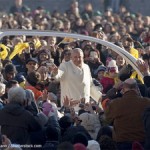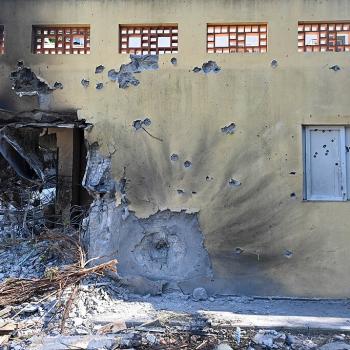Each Friday afternoon, I spread a tablecloth on my dining room table, place two braided loaves of bread on the cloth, and then cover the bread with another cloth, one of several specially designed, beautiful challah covers we have accumulated over the years. I have known since my first days of rabbinical school that the custom of blessing two loaves on Shabbat evokes the double portion of manna –the mysterious lechem min ha shaymayim– “bread from heaven” (Exodus 16:4)– that the Israelites collected on the eve of the Sabbath (Exodus 16:5) Recently, I deepened my understanding of this symbolic act.
In the version recounted in the Book of Exodus, the manna appears under a layer of dew (Exodus 16:13). But when the Book of Numbers recounts the story, this same manna appears on top of the dew (Numbers 11:9). As Rashi explained, this discrepancy proved simple to resolve. The manna fell between two layers of dew! Our double Shabbat loaves, nestled between two pieces of cloth, can serve as a weekly reminder that our bounty –the bread we eat and much more — comes to us like “manna from heaven.”
The Torah tells us that for forty years every morning manna appeared for each individual according to his or her eating (ish l’fi ochlo) —no more, no less (Exodus 16:18). If people gathered more than they needed, the excess food bred worms and rotted. Yet everyone could start each day with enough. Why not just provide all that was needed for a week or a year? According to the text, it is so “you shall see the glory of the Lord” (Ex 15:7). The people were to anticipate and then enjoy God’s presence each and every day. This method of distribution has taught generations of Jews a spiritual lesson; it serves as a reminder to daily sense God’s kindness and to acknowledge our connection to the Source of sustenance.
But there is more to it than that.
Manna plays a role in a classic dispute between two political philosophers, John Rawls and Robert Nozick. Rawls famously argued in favor of distributive justice, suggesting why we might think of the goods of the society as a pie to be distributed as fairly as possible. Nozick disagreed, maintaining th at society has no right to distribute what individuals produce with their own talents and efforts. Producers of goods have a certain entitlement to what they produce. After all, Nozick wrote, it’s not as if the goods appeared like “manna from heaven.”
Perhaps not. Yet our talents are not earned, they are God-given, and they would be worth little without the nurturance of parents, teachers and society. Even within a capitalist system of incentives, much of what we have is attributable to “manna.” In the United States today, we are living with an extraordinary level of wealth inequality. Since 2007, the wealth gap in the United States—already growing since the 1970’s —has been expanding ever more dramatically. It has now reached the highest level since before the Great Depression. As Obama put it in a speech on December 4, “The top ten percent no longer takes in one third of our income—it now takes half.”
Even more troubling, despite many Americans’ belief that we live in a land of opportunity, social mobility is not what it used to be. Obama continued: “A child born in the top twenty per cent has about a two-in-three chance of staying at or near the top. A child born into the bottom twenty per cent has a less than one-in-twenty shot of making it to the top.”
Research by Harvard professor Robert Putnam and his colleagues explores some of the reasons for this stagnation. Long before they have had a chance to produce or not produce goods to which they would be entitled, children in our country receive vastly different, and unequal, supports from their environment.
What would it be like to lift the challah cover each Friday night and to experience renewed gratitude for the plentitude with which I am blessed? And, further, what would it mean, at the same time, to remember that I live in a society growing ever further from the manna ideal, a world where there is enough for all?
Like the Jews, Muslims have preserved the memory of the manna. A solidly established hadith (al-Bukhârî (194-256/810-870) states that “Kam’ah (truffles) is a type of manna, and its liquid is a remedy for the eyes.” I pray that the two challot I uncover each Friday night, like “bread from heaven,” can serve as a remedy for my own eyes—to remind me not to be blind to the gap between my plenty and others’ want, between our current reality and the vision of a more just world.
Rabbi Nancy Fuchs Kreimer, PhD, is the Director of the Department of Multifaith Studies and Initiatives at the Reconstructionist Rabbinical College where she is Associate Professor of Religious Studies. Since 1989, she has helped develop courses in Christianity, Islam, Eastern Religions and Science and Religion for rabbinical students, including courses that integrate service with academic learning.She is co-editor of Chapters of the Heart: Jewish Women Sharing the Torah of Our Lives (Wipf and Stock, 2013). She blogs at www.multifaithworld.org.
ON Scripture — The Torah is a weekly Jewish scriptural commentary, produced in collaboration with Odyssey Networks and Hebrew College. Thought leaders from the United States and beyond offer their insights into the weekly Torah portion and contemporary social, political, and spiritual life
















